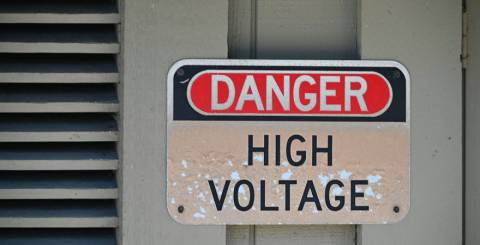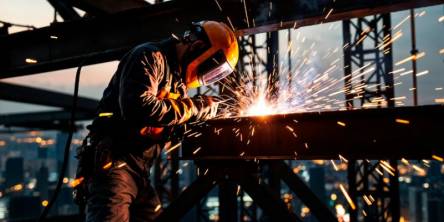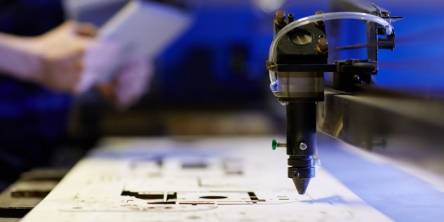What Are the Consequences of Not Maintaining Servo Stabilizers?

Introduction
A servo stabilizer is an important device to maintain a safe voltage range and protect your equipment from any sort of potential damage that may happen due to voltage fluctuation.
If you do not maintain your stabilizer, it will negatively impact its performance and put the connected devices at risk.
In this article, we will discuss all the negative effects of not maintaining your stabilizer and how it can threaten the safety of your devices.
Importance of Servo Stabilizer
Servo stabilizers play an important role in protecting your electrical devices from potential damages caused by voltage fluctuation. It helps your devices to smoothly operate and ensure optimal performance.
The stabilizers are designed to manage the fluctuating input voltage and turn it into a constant output voltage. It protects the electrical devices connected to the stabilizer from any sudden variation in voltage.
Servo stabilizers are used in hospitals, educational institutes, industries, residential buildings, data centres, etc. to protect sensitive equipment from any potential damages.
Consequences of Neglecting Servo Stabilizer Maintenance
There are a number of disadvantages to not maintaining the servo stabilizer; some of them are listed below:
Reduced efficiency:
One of the major effects of not maintaining your servo stabilizer regularly is the reduction in its performance.
Over a course of time, dust and debris accumulate in the internal parts of the servo stabilizers. It can cause overheating and thus reduce the performance and life span of your servo stabilizers.
The ability of the stabilizer to regulate voltage is reduced, and it puts the equipment connected to it at risk.
Increased Risk of Equipment Damage:
Along with the stabilizer's performance, the performance of the electrical devices is also impacted, and the risk of potential damages increases.
The probability of malfunction in the functioning of the stabilizer increases due to poor maintenance.
It can further lead to sudden spikes or sags in the voltage level that can damage the devices connected to the stabilizer.
If the servo stabilizer is not properly maintained, internal components like control circuits and transformers may deteriorate.
It can cause unexpected fluctuations in the voltage that are dangerous for your electrical equipment.
For example, if a servo stabilizer in an industrial setup malfunctions, it may cause harm to expensive machinery and stall the production process, which in turn could lead to financial losses.
Higher Energy Consumption:
If you ignore the regular maintenance of your servo stabilizer, it can increase its energy consumption to operate.
When the servo stabilizer's components are not maintained properly, they may draw more and more energy to compensate for the inefficiency in their ability to regulate voltage.
The more energy it consumes, the more you will have to pay for your electricity bill.
Also, excessive consumption will put an extra load on your servo stabilizer, which in turn will accelerate its wear and tear.
Safety Hazards:
Another disadvantage of irregular maintenance is that it puts your safety at risk.
The electrical devices and machines that are connected to an unstable power supply due to a failed servo stabilizer can cause short circuits, electrical fires, and damage to the machine itself.
In extreme scenarios, the malfunction of the servo stabilizer can cause damage to you and your property.
It is better to maintain your servo stabilizer regularly to avoid any potential damage to you and your property.
Costly Repairs and Downtime:
The cost of repair is more than the price of maintenance when it comes to a servo stabilizer.
The unexpected disruption will put a deeper dent in your savings than the downtime of the connected electrical devices.
It can put a stop to your entire operation and cause a delay in your work.
Such disruptions and delays can lead to financial losses and waste your time.
Unexpected expenses and interruptions can be avoided if you maintain your service stabilizer on a regular basis.
Importance of Regular Maintenance
To decrease the chances of the negative consequences mentioned above, you must maintain your servo stabilizer at regular intervals.
Scheduled inspections, cleaning, and testing of the servo stabilizer's components are important for its peak performance.
Maintenance at the right time can increase the lifespan of the servo stabilizer.
It also increases the reliability of the stabilizer in protecting your connected devices against voltage fluctuations.
Conclusion
Ignoring the regular maintenance of your servo stabilizer can lead to myriad negative consequences.
It will reduce the efficiency of the stabilizer and the devices connected to it.
It will also decrease the life span of both the electrical equipment and the stabilizer.
With reduced efficiency, the servo stabilizer will cost you more in terms of energy consumption, safety hazards, delay in operations, troubleshooting, and repair of your machinery.
Therefore, it is advisable that you invest your time, energy, and money in the regular maintenance of your servo stabilizer. It will increase the lifespan and effectiveness of your stabilizer and the devices connected to it.
In the end, it will decrease the possibility of any potential damages.
Similar Articles
When you see a steel ship in the harbor, the first impression is usually sheer scale.
Explore CNC turning—its components, process, benefits, applications, and future trends shaping modern precision manufacturing in various industries.
In the competitive industry of car manufacturing, attaining exceptional performance along with an innovative design needs the incorporation of modern manufacturing technologies
Facing delays, quality issues, or supply chain problems in hardware manufacturing? Learn the top 7 challenges—and practical fixes—to streamline production.
In the rapidly advancing landscape of high-tech manufacturing, electronics, and materials science, diamonds are no longer just gemstones they’re high-performance materials redefining what’s possible in technology.
A business in the manufacturing industry today has to ensure that it chooses the precision-engineered components suppliers keenly since the competition is very stiff
Selective Laser Sintering, or SLS, has established itself as one of the most reliable and widely used 3D printing technologies. This method is valued for its ability to produce complex, durable, and high-quality parts without the constraints of traditional manufacturing.
In the retail and display industry, the visual appeal of products is paramount. Customers are constantly drawn to displays that are not only eye-catching but also provide an immersive experience.
As previously established, CO2 laser technology operates by shining a high-power infrared beam on a mixture of gas that contains carbon dioxide, nitrogen, and helium. This technology is well known for the fact that it is able to engrave onto a variety of materials such as wood, glass, plastic, leather, and even some metals with high precision and without contact.









